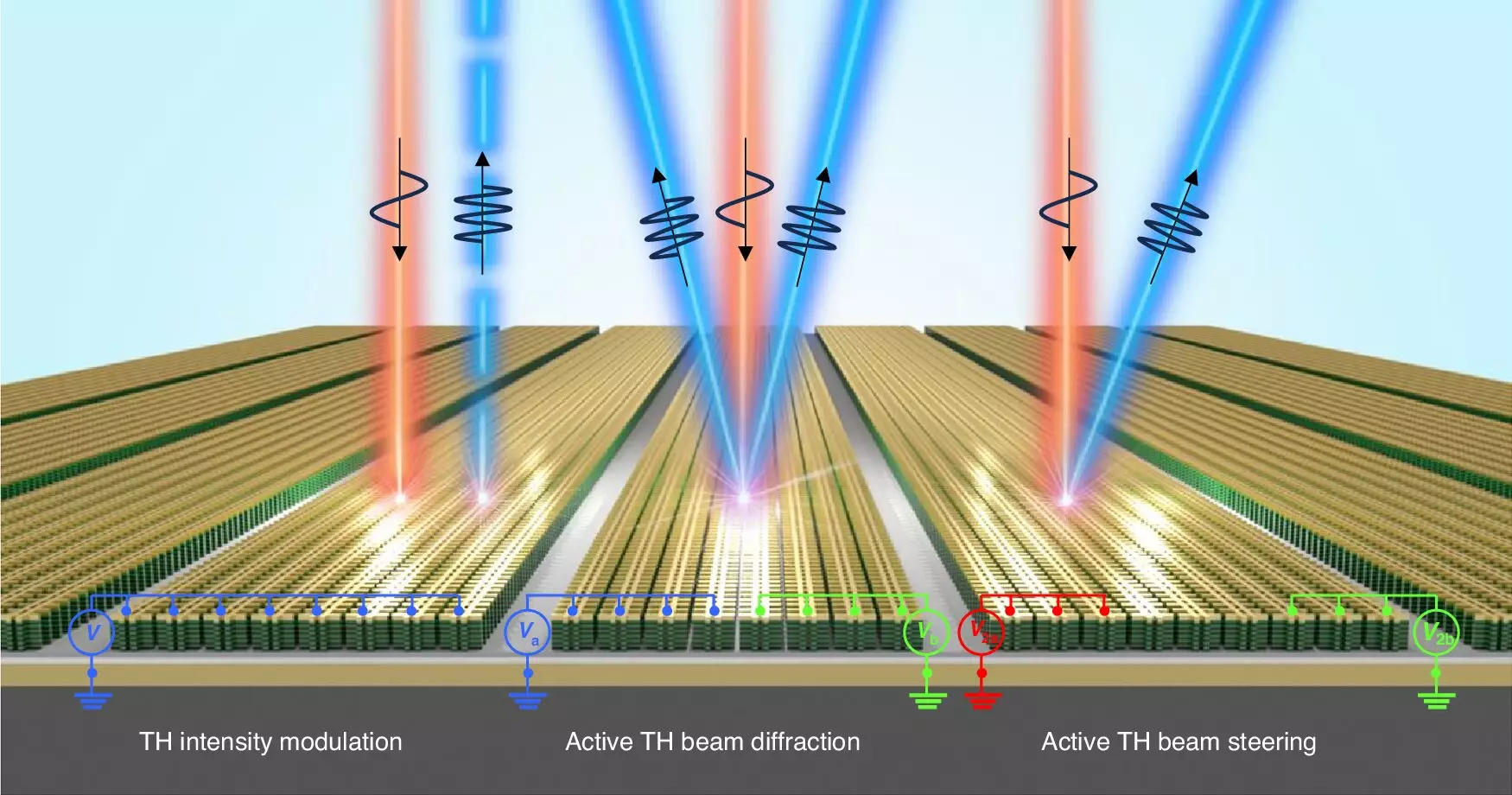Recent advancements in nonlinear optical metasurface technology present exciting possibilities for the future of communication and diagnostic devices. This innovative field utilizes structures that are smaller than the wavelength of light, leading to groundbreaking developments in essential technology areas, such as quantum light sources and medical imaging tools. Researchers, led by Professor Jongwon Lee from the Department of Electrical Engineering at UNIST, have published significant findings that not only highlight experimental implementations of electrically tunable third-harmonic generation (THG) but also set a new benchmark in optical engineering.
For the first time, researchers have successfully demonstrated third-harmonic generation through an intersubband polaritonic metasurface integrating multiple quantum wells (MQWs). This achievement is notable for its impressive capabilities: a modulation depth of 450% in the THG signal and an 86% suppression of zero-order diffraction. Such enhancements indicate that not only can the metasurface generate light at previously unattainable efficiencies, but it can also maintain focus and clarity that eludes traditional optical devices. A particularly striking aspect of the findings is the ability to exceed 180 degrees in local phase tuning, which could vastly improve the precision of optical instruments.
The field of nonlinear optics revolves around the complex interactions between light and matter, where single light sources can produce multiple wavelengths. This has immense implications for data transmission, vastly surpassing the capabilities of traditional single-wavelength lasers. A well-known application of nonlinear optics is the green laser pointer, illustrating its utility in everyday technology. The metasurface technology being developed can lead to the creation of ultra-compact, lightweight optical devices, making laser systems as thin as a sheet of paper, employing materials thinner than human hair.
Historically, controlling nonlinear optical processes through electrical means has posed significant challenges. The revolutionary metasurface created by Professor Lee’s team represents a paradigm shift, allowing for effortless modulation that promises to enhance various applications. The novelty of this technology lies in its ability to provide voltage control of second-harmonic generation (SHG) and independently modulate both the intensity and phase of the THG. This allows for unprecedented flexibility in tailoring the properties of light, positioning the metasurface as a cornerstone for future innovations.
The potential applications stemming from this advancement are staggering. As Professor Lee aptly noted, “By adjusting the intensity and phase of nonlinear THG through electrical means, we open new avenues for applications in light modulation for cryptography, dynamic holography, next-generation quantum sensors, and quantum communication light sources.” The sheer versatility of the optical metasurface could redefine what is achievable in the realms of security, data storage, and communication technologies.
As research continues and more breakthroughs emerge, the field of nonlinear optics is set to undergo a significant transformation—one that could not only redefine technology but also enhance our understanding of the fundamental interplay between light and matter. The innovations heralded by Professor Lee and his team underscore the importance of continued exploration in this dynamic field, hinting at a future where the limitations of optical technology are fundamentally reimagined.

